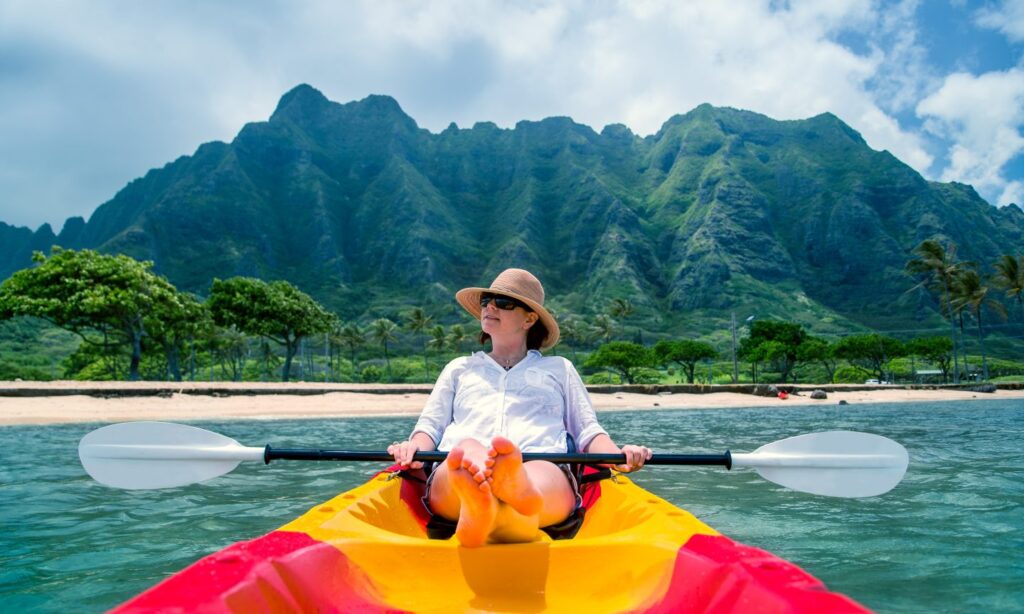Though the pandemic hit Hawaii hard early on, tourism in the Aloha State has bounced back and, by some measures, is growing faster than ever: More tourists are coming from the U.S. mainland than before the pandemic, and average spending per trip is also up.
Increased demand means higher prices, but that demand increase is just beginning: Asian travelers, who previously made up a significant portion of Hawaii’s tourism, have not returned to the island in pre-pandemic numbers, largely due to ongoing COVID-19 restrictions.
However, with recent border reopenings in Asia and major changes to Hawaii’s tourism industry (such as Disney Cruises and tourist restrictions), the future of travel to Hawaii is likely to be more competitive and expensive. Still, there are ways to visit that will allow you to avoid crowds, minimize tourist overcrowding, and save money.

Hawaii tourism hits record highs by several metrics
More than 700,000 people visited Hawaii in September 2022, a 95.5% recovery from the same month in 2019. But while overall tourism numbers have not exceeded pre-pandemic levels, many other metrics have improved significantly, according to data from the Hawaii Department of Business, Economic Development and Tourism.
Here are some of the most significant changes to Hawaii tourism from September 2019 to September 2022.
Overall tourism spending in Hawaii increased 18.5%.
The average distance traveled increased by 5.9%.
The number of tourists coming from other parts of the United States increased by 29%.
The increased spending could be due in part to inflation: The average cost of airfare rose about 8% nationwide between September 2019 and September 2022, and hotel prices increased 5%, according to a NerdWallet analysis of Consumer Price Index data. But the national inflation increase of 16% during that period is below Hawaii’s specific spending increase of 18.5%.
Stays in Hawaii are now longer than they were before the pandemic, likely due to an increase in workcations. The average stay in September 2022 was 8.9 days, up 5.9% from the September 2019 average of 8.4 days.
People are also spending more on everyday activities like hotels, tours and dining than they did before the pandemic. The average spending per person per day in September 2022 was $236, up 17.1% from the same month in 2019.
Of all the islands, Oahu saw the sharpest increase in average daily visitor spending, up 25% compared to pre-pandemic. Oahu has also seen heavy investment in visitor-oriented improvements, many of which include a renewed emphasis on Hawaiian culture and history.
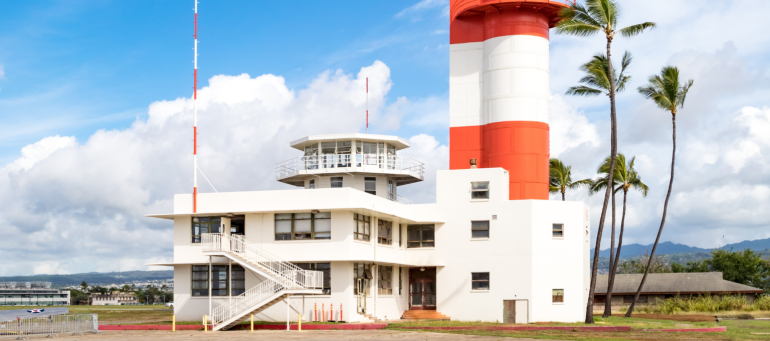
Control tower on Ford Island. (Photo courtesy of Pearl Harbor Aviation Museum)
The Pearl Harbor Aviation Museum’s Ford Island Control Tower, for example, opened this summer after more than a decade of restoration. The Polynesian Cultural Center’s Alii Luau officially reopened in August 2022. (It originally began shortly before the pandemic shutdown in fall 2019.) It’s the only luau in Hawaii that features a historically accurate presentation of Hawaiian culture, says Seth Casey, marketing manager for the Polynesian Cultural Center.
And tourists are responding positively to such additions: In the first quarter of 2022, more than two-thirds of tourists from the U.S. and Canada participated in history- or culture-focused activities, according to DBEDT.
Supply may not increase, putting further pressure on prices
While demand is high, supply may not increase much: A majority of Hawaii residents say they don’t want more lodging built.
While 77% of residents want to crack down on illegal vacation rentals, 64% don’t want any new vacation rentals at all, according to DBEDT’s spring 2022 Resident Opinion Survey, conducted among about 2,000 Hawaii residents from May to July 2022. It’s not just an issue with vacation rentals, as 66% said they don’t want to allow hotels, condominiums or timeshares to expand.
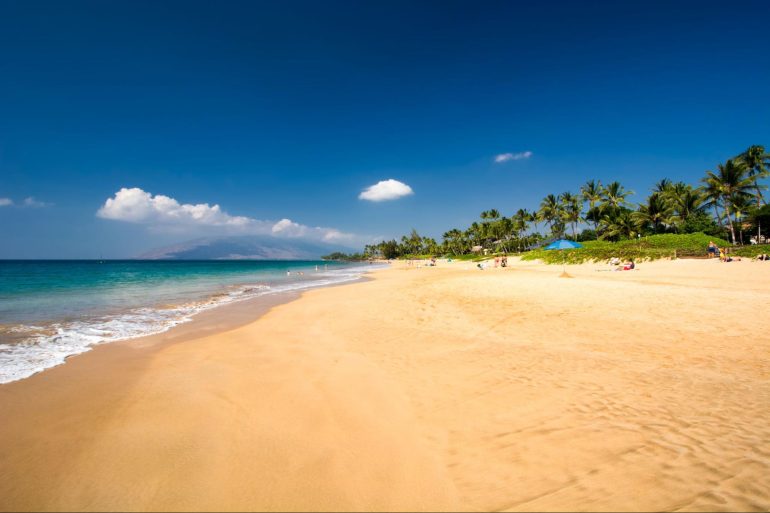
Kamaole Beach on Maui’s south shore. (Getty Images)
There are also restrictions on Hawaii’s tourist activities. For example, a pilot project being implemented this winter by Park Maui will restrict parking at Kamaole Beach Park on Maui before 10 a.m. on weekends and holidays, allowing only Maui County residents to park. Nonresidents will be able to park for a fee after 10 a.m. (Residents, however, will be able to park for free.)
The shift is due in part to growing anti-tourism sentiment. In 2009, 78% of residents said they at least somewhat agreed that tourism brings more benefits than problems. But that number has been steadily declining; by 2022, it was just 54%.
But some residents are more favorable to tourism than others. Oahu, which has seen the largest increase in average visitor spending of any island since before the pandemic, has recently seen a rise in pro-tourism sentiment, reversing a downward trend that began before the COVID-19 pandemic. According to DBEDT data, Oahu and Big Island residents are more likely than Maui and Kauai residents to say tourism should be actively encouraged.
Meanwhile, Maui and Kauai residents are increasingly saying their islands are being run for tourists at the expense of locals and that their economies are too dependent on tourism. Residents on those islands are more likely to want to stop hotel construction and vacation rental approvals, and to call for residents-only days at parks and beaches.
Still, Hawaii’s tourism industry will continue to explode.
Hawaii’s tourism numbers are about 96% of what they were before the pandemic, but there are signs they will be much higher in 2023.
First, DBEDT data shows that tourism numbers from other parts of the United States are already up significantly, up 29% in September 2022 compared to September 2021. Meanwhile, tourism numbers from other countries are still down, most notably from Japan.
More than 1.5 million tourists came from Japan in 2019, accounting for about 15% of the state’s total tourism numbers. But as of now, Japanese tourism is still down 83%.
This figure is subject to change, as Japan recently reopened its borders to individual foreign travelers after nearly three years of strict pandemic restrictions. Travelers can now enter Japan without applying for a visa in advance. Similarly, it will be much easier for Japanese people to get to Hawaii. Direct flights between the two cities finally resumed in August 2022 after a pandemic-induced hiatus, making convenient travel from Japan to Hawaii possible again.
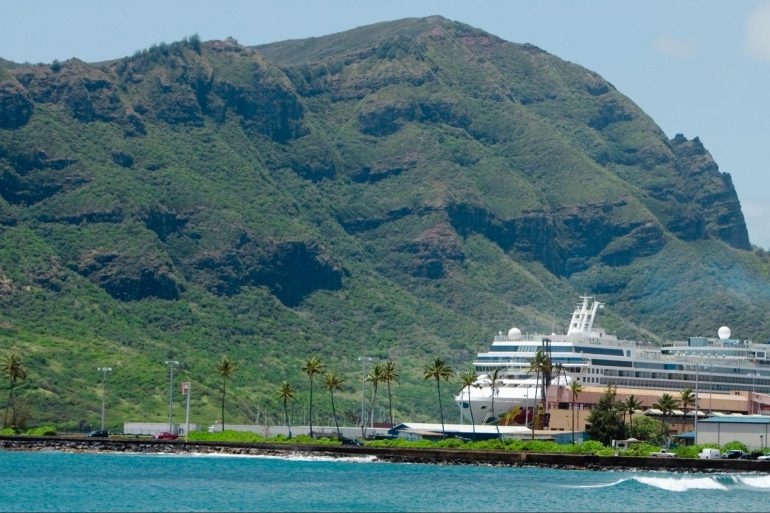
A cruise ship parked above Nawiliwili Beach Park on Kauai (Getty Images)
Then there are cruises. Hawaii suspended cruise ship calls for the first two years of the pandemic, then in the first nine months of 2022, 26 out-of-state cruise ships called and carried 40,658 tourists, DBEDT reported. That’s still far fewer than the 44 cruise ships and 95,149 tourists that called during the same period in 2019, but cruises are starting to pick up again.
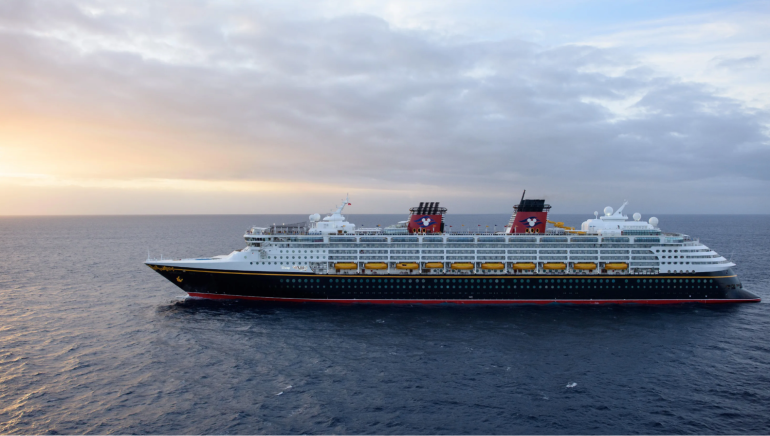
Starting in October 2023, Disney Wonder will be the first cruise line to offer a South Pacific route departing from Hawaii. (Photo courtesy of Disney Cruise Line)
This year, Disney Cruise Line announced its inaugural South Pacific cruise voyage, traveling between Honolulu and Sydney with stops in American Samoa and Fiji, among other destinations.
Should tourists go to Hawaii? Yes, but with caution
There are many ways to reduce your contribution to Hawaii’s tourism problem and save money. Here are some ways to minimize costs and overtourism when traveling the islands.
Encourage historically accurate tourism experiences: While residents are divided on the benefits of tourism, most agree that educating visitors about the islands’ culture and natural resources is crucial. Tourism activities like the Polynesian Cultural Center’s Alii Luau are working to do just that.
Casey said when the show began production in 2019, producers worked hard to get feedback from cultural experts to ensure accuracy.
This luau pays tribute to Hawaii’s last monarch, Queen Liliuokalani, with performers onstage telling her stories in her own words and performing original songs written by the Queen.
Ditch the rental car and use public transportation: Don’t be intimidated by the idea of exploring Hawaii without a rental car; it’s possible. Oahu is generally the easiest of the Hawaiian islands to get around without a car, with public transportation, TheBus, and the privately run Waikiki Trolley, which stops at most major attractions. On other islands, try joining a small group tour rather than renting a car and getting stuck in traffic on your own. For experiences like Maui’s famously winding Road to Hana, having someone drive while you enjoy the views may be ideal.
Respect natural resources: Although it’s possible to spend time in nature at little cost, it’s important to be considerate of the environment. Don’t carve your name into trees, don’t leave trash, and stay on the trail whenever possible.

The Courtyard Oahu North Shore is one of the hotels with no resort fee. (Photo courtesy of Marriott)
Look for hotels that don’t charge resort fees. Resort fees are one of the most drastic (and increasingly common) features found in popular travel destinations like Hawaii. These semi-hidden fees are meant to cover the cost of things like fitness centers and pools, but they’re not negotiable. Even if you don’t use the amenities, you’re still charged.
However, some hotels don’t charge extra. For example, the Courtyard Oahu North Shore offers standard amenities like a pool and waterfalls, as well as cultural activities like ukulele and hula classes at no extra cost.
“We look at things from the guest’s perspective,” says Dave Betham, the hotel’s general manager. “Ideally, there are no surprises.”
Making Hawaii Tourism Better for Residents and Locals
Hawaii’s tourism industry is growing and is on track to reach new highs, even surpassing pre-pandemic levels.
For tourists, Hawaii is a great vacation destination, offering an escape from the cold weather and an opportunity to explore a different culture through new foods, activities and historical sites.
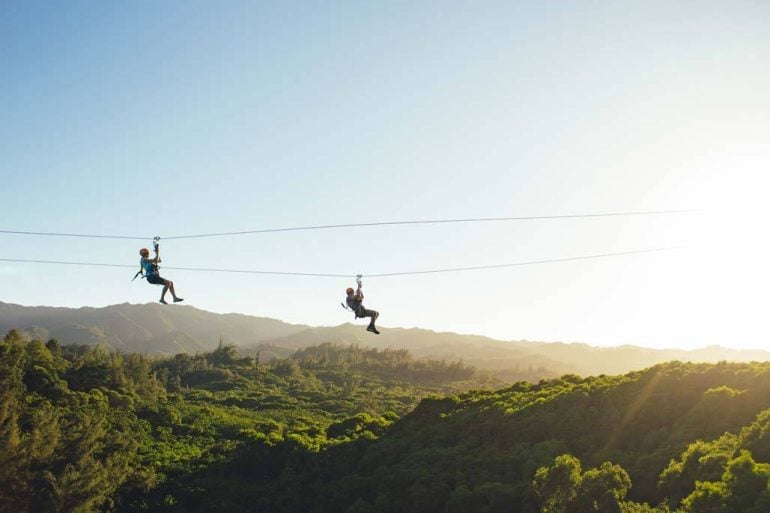
Zip lining on Oahu (Photo courtesy of Climbworks Keena Farms)
Many in Hawaii’s tourism industry say they want to offer activities that respect the land, including people like Betham and Aaron Campbell, owner of Climbworks Keena Farms, a zip-line company on Oahu’s North Shore.
“We want tourists to come, but we want them to come responsibly,” Campbell said.
During the 10-minute ride to the top, visitors learn about Hawaiian history, culture and agriculture, and the zipline tour itself is dotted with educational displays.
“When we look back at the tourism promotion we’ve done, we’re reexamining the value of tourism,” Betham said. “How can we create a better experience for the tourist, for us, and for the people of Hawaii?”


